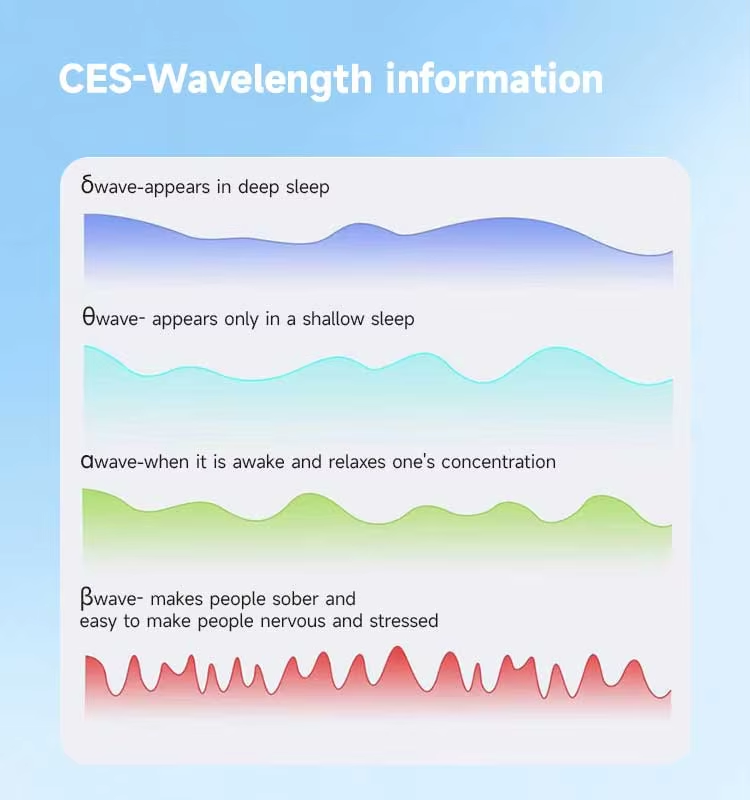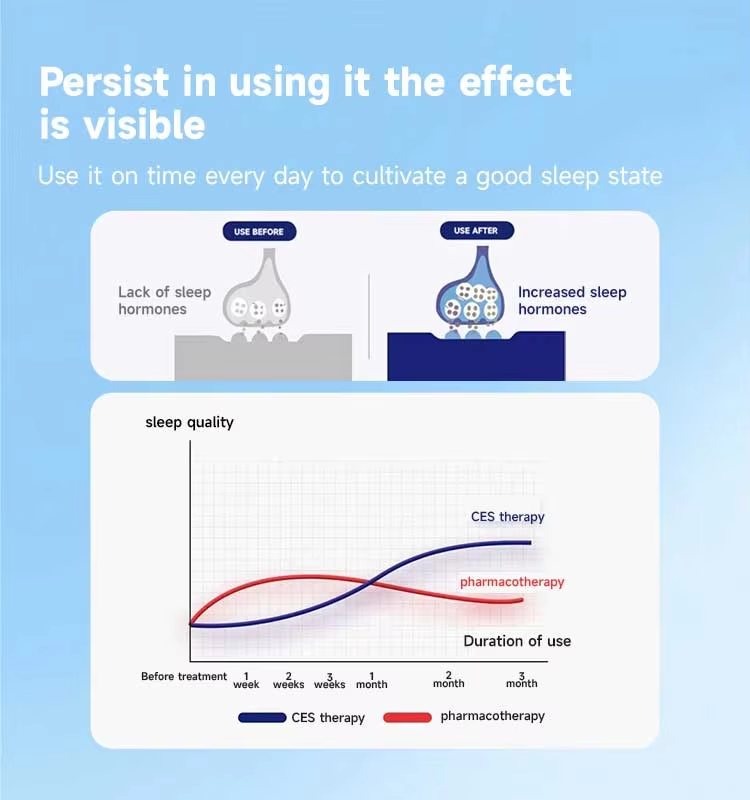CES stands for Cranial Electrotherapy Stimulation, also known as "Transcranial Microcurrent Stimulation". It is a physical therapy with no side effects that has passed FDA safety standards. The principle of this therapy is to use low-intensity microcurrent to conduct diffuse stimulation on the limbic system of the brain, simulating the normal wave frequency of the human body. This helps to affect and improve abnormal brain waves, increase the depth of sleep, and promote the secretion of endorphins by the brain, which can regulate human mood, achieve a calming effect, and assist in promoting a state of relaxation.
For issues with restlessness, the brain's electrochemical signals (known as neurotransmitters) play a role in regulating the state of being asleep or awake. CES works by gently modulating these signals through electrotherapy, helping to bring them into a more balanced state, which in turn supports a more restful state.
For managing emotional balance, the brain's electrochemical signals play a role in regulating feelings and states of relaxation. When these signals are less balanced, it can affect the body's emotional regulation. The CES AT-9 machine uses low-frequency electrical pulses to gently stimulate the brain, helping to convey a sense of relaxation and support a calmer state.










